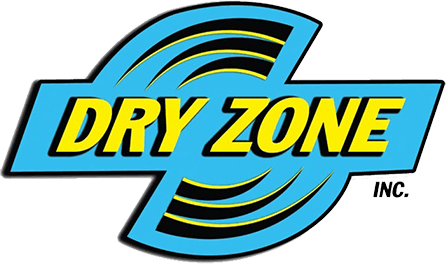Florida's vibrant coastline and sunny weather come with a reality: hurricane season. While these powerful storms can bring heavy rain and strong winds, the potential for flooding between June and November is a significant threat to many Florida residents. Here's a comprehensive guide on flood preparedness during hurricane season, specifically tailored to help you protect your home before the storm hits.
1. Know Your Florida Flood Risk
Don't wait until a hurricane watch is issued to understand your flood risk. Florida has a well-developed flood map system. Access your local flood maps through FEMA's website or your county's emergency management office website. Look for your specific flood zone designation (X, AE, etc.) to understand the potential flood depth and frequency in your area.
2. Develop a Hurricane Flood Plan
Florida's unique geography makes flood planning crucial. Here are key elements to incorporate into your hurricane flood plan:
- Evacuation Routes and Shelters: Identify evacuation routes that avoid low-lying areas prone to flooding. Research hurricane shelters in your county, considering pet-friendly options if necessary. Familiarize your family with the plan and practice evacuation drills.
- Communication Plan: Establish a communication plan for contacting family members, staying informed about hurricane updates and evacuation orders. Designate an out-of-state contact person everyone can reach if local communication networks are disrupted.
3. Assemble a Hurricane Flood Emergency Kit
Florida's hurricane season can coincide with power outages. Ensure your emergency kit is well-stocked and includes:
- Non-perishable food and bottled water: A 7-day supply is recommended by Florida Disaster to account for potential delays in returning home or limited access to stores after the storm.
- Hurricane shutters or heavy-duty plywood: Protect your windows from windblown debris with pre-cut and labeled plywood or invest in hurricane shutters.
- Medications and first-aid supplies: Ensure a sufficient supply of essential medications and first-aid supplies for treating minor injuries, especially if power outages disrupt access to pharmacies.
4. Flood-Proofing Your Florida Home
Florida's flat landscape makes basements less common, but crawlspaces and ground-level entry points can be vulnerable. Here are flood-proofing tips:
- Install a Backflow Prevention Valve: This valve prevents sewage from backing up into your home during heavy flooding.
- Seal Crawlspaces and Foundation Vents: Use waterproof sealant to minimize water seepage through cracks in crawlspaces and foundation vents. Consider closing foundation vents during a hurricane.
- Elevate Utilities: Consider elevating utilities like electrical panels, water heaters, and appliances above the potential flood level, especially in crawlspaces.
- Install a Sump Pump with Battery Backup: A sump pump removes excess water from low-lying areas like crawlspaces. Opt for a model with a battery backup system to ensure functionality even during power outages.
5. Sandbags and Flood Barriers in Florida
Sandbags are a readily available flood barrier option in Florida. Many hardware stores sell pre-filled sandbags, or you can fill your own:
- Filling and Stacking Sandbags in Florida: Florida Statutes recommend using sand or a sand-gravel mix for optimal weight and stability. Wear gloves while filling and stacking to prevent injuries.
- Placement of Sandbags in Florida: Place sandbags around doorways, crawlspaces, and other potential entry points for floodwater. Ensure they create a continuous barrier and are stacked securely, overlapping seams to prevent leaks.
6. Additional Hurricane Flood Preparedness Measures
- Hurricane Insurance: Standard homeowners' insurance typically doesn't cover flood damage. Consider purchasing a separate flood insurance policy through the National Flood Insurance Program (NFIP).
- Move Valuables to Upper Floors: Move valuable belongings and important documents to higher floors in your home to minimize potential damage from flooding.
- Clear Property Drains: Clean gutters, downspouts, and storm drains around your property to ensure proper water flow away from your foundation. Clogged drains can exacerbate flooding issues, especially during heavy rain.
- Trim Trees and Shrubs: Overgrown trees and shrubs can contribute to flooding by blocking drainage pathways. Trim tree branches away from your house and clear any debris from gutters and downspouts.
- Secure Outdoor Furniture and Equipment: Secure or bring in outdoor furniture, grills, and any loose equipment to prevent them from becoming projectiles or floating debris during a flood.
7. Stay Informed and Take Action During a Hurricane
- Monitor Hurricane Updates: Closely monitor weather reports and hurricane warnings issued by the National Hurricane Center (NHC) and local authorities. Be aware of rising water levels and potential evacuation orders.
- Heed Evacuation Orders Promptly: In Florida, evacuation orders are issued based on predicted storm surge and flood risk. Don't hesitate to evacuate if instructed by authorities. Leaving early allows emergency personnel to focus on rescue efforts in high-risk areas.
- Document Damage After the Storm: If your home is flooded, take photos and videos of the damage for insurance purposes. However, prioritize your safety and avoid entering flooded areas with standing water. Wait for floodwaters to recede completely before entering your home, and be aware of potential electrical hazards.
If your home experiences flood damage after a Florida hurricane, don't panic. Call DryZone immediately at (239) 360-5207 for fast emergency response!


